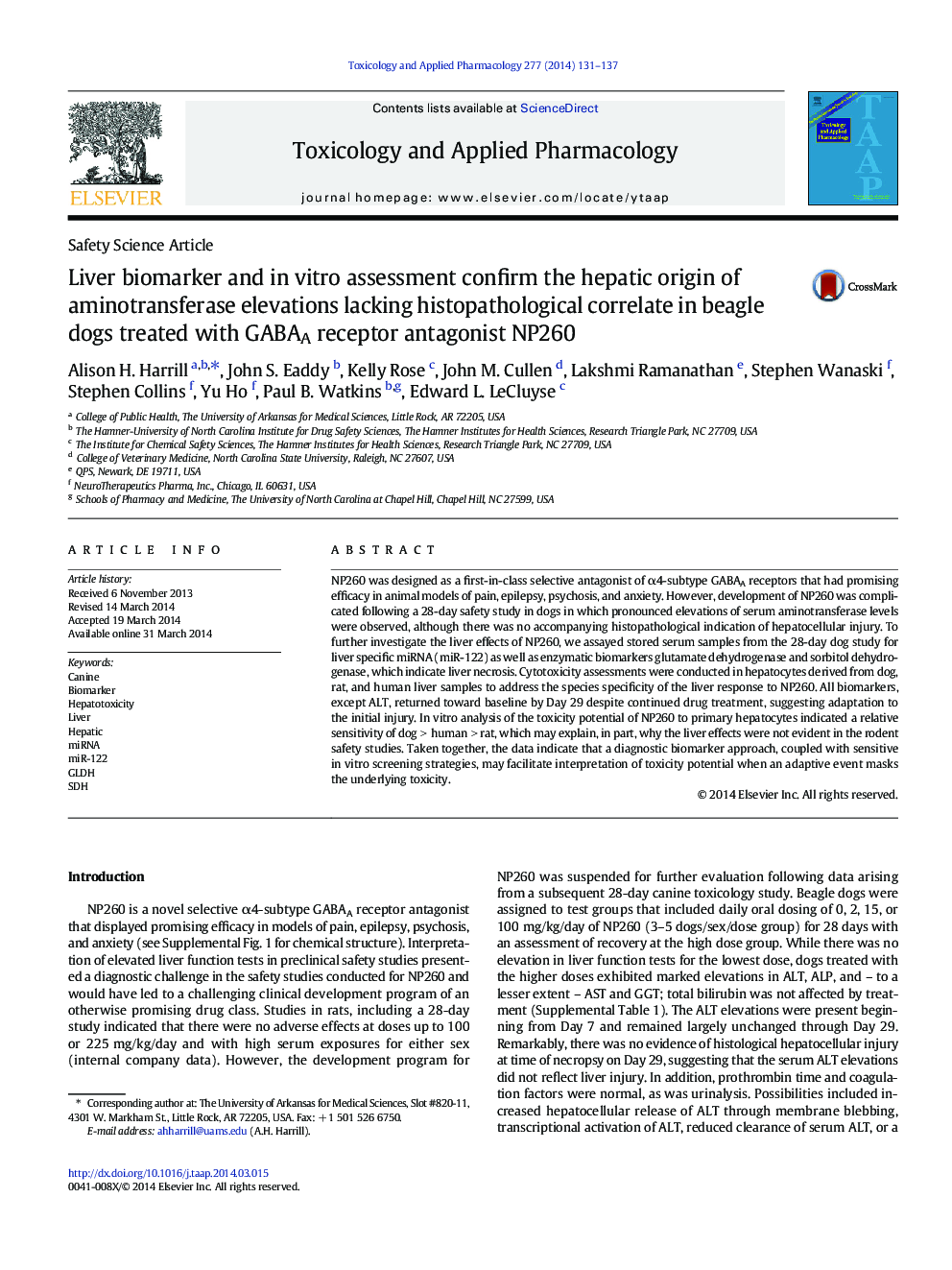| کد مقاله | کد نشریه | سال انتشار | مقاله انگلیسی | نسخه تمام متن |
|---|---|---|---|---|
| 2568528 | 1128464 | 2014 | 7 صفحه PDF | دانلود رایگان |

• NP260 caused ALT elevations in dogs without evidence of hepatocellular injury.
• SDH, GLDH, and miRNA-122 elevations occurred, confirming hepatocellular necrosis.
• NP260 toxicity is greater in dog and human hepatocytes than in rat hepatocytes.
• Species sensitivity may explain why the rodent studies failed to indicate risk.
• Diagnostic biomarkers and hepatocyte studies aid interpretation of hepatotoxicity.
NP260 was designed as a first-in-class selective antagonist of α4-subtype GABAA receptors that had promising efficacy in animal models of pain, epilepsy, psychosis, and anxiety. However, development of NP260 was complicated following a 28-day safety study in dogs in which pronounced elevations of serum aminotransferase levels were observed, although there was no accompanying histopathological indication of hepatocellular injury. To further investigate the liver effects of NP260, we assayed stored serum samples from the 28-day dog study for liver specific miRNA (miR-122) as well as enzymatic biomarkers glutamate dehydrogenase and sorbitol dehydrogenase, which indicate liver necrosis. Cytotoxicity assessments were conducted in hepatocytes derived from dog, rat, and human liver samples to address the species specificity of the liver response to NP260. All biomarkers, except ALT, returned toward baseline by Day 29 despite continued drug treatment, suggesting adaptation to the initial injury. In vitro analysis of the toxicity potential of NP260 to primary hepatocytes indicated a relative sensitivity of dog > human > rat, which may explain, in part, why the liver effects were not evident in the rodent safety studies. Taken together, the data indicate that a diagnostic biomarker approach, coupled with sensitive in vitro screening strategies, may facilitate interpretation of toxicity potential when an adaptive event masks the underlying toxicity.
Journal: Toxicology and Applied Pharmacology - Volume 277, Issue 2, 1 June 2014, Pages 131–137